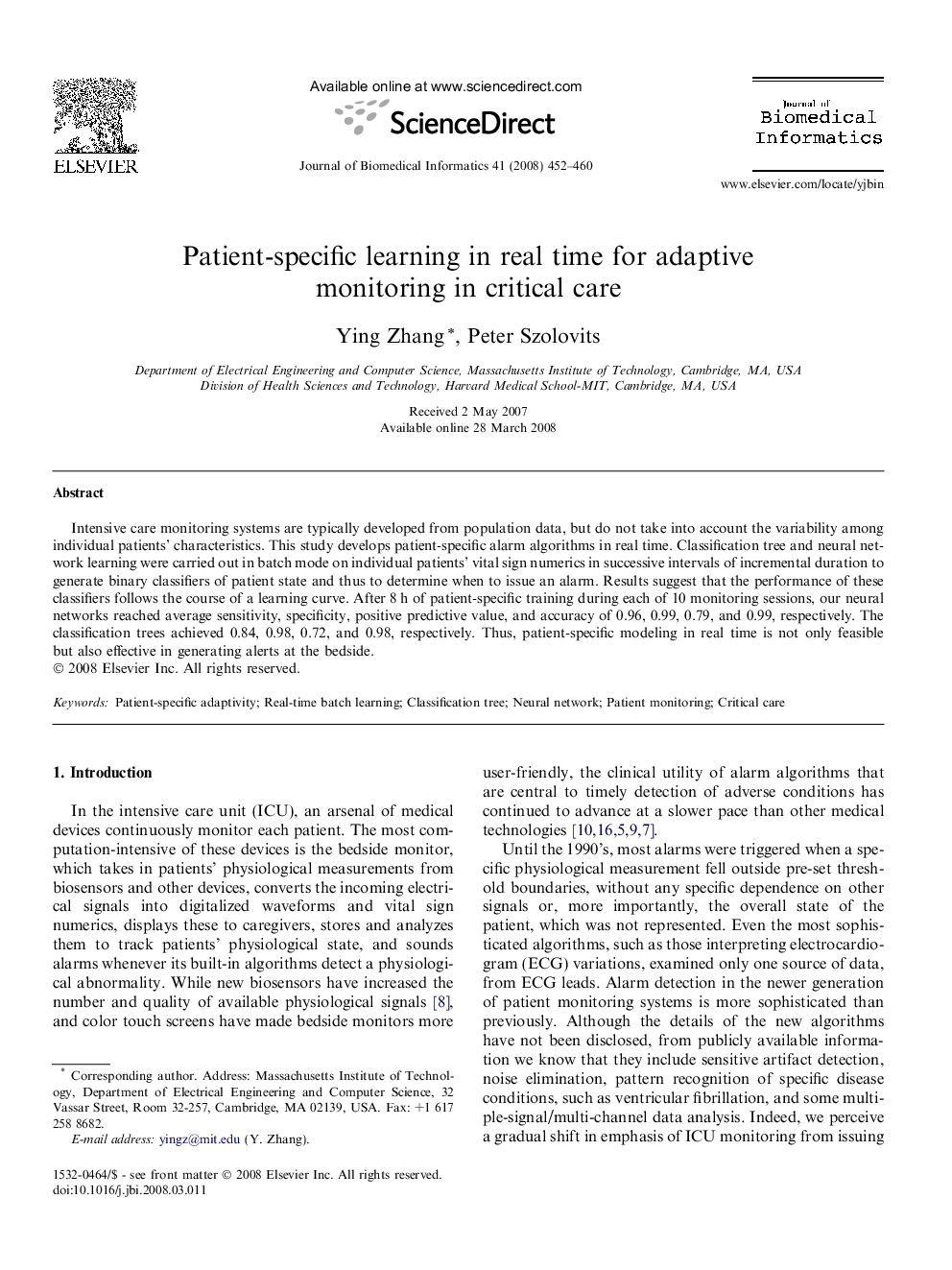| Article ID | Journal | Published Year | Pages | File Type |
|---|---|---|---|---|
| 518972 | Journal of Biomedical Informatics | 2008 | 9 Pages |
Intensive care monitoring systems are typically developed from population data, but do not take into account the variability among individual patients’ characteristics. This study develops patient-specific alarm algorithms in real time. Classification tree and neural network learning were carried out in batch mode on individual patients’ vital sign numerics in successive intervals of incremental duration to generate binary classifiers of patient state and thus to determine when to issue an alarm. Results suggest that the performance of these classifiers follows the course of a learning curve. After 8 h of patient-specific training during each of 10 monitoring sessions, our neural networks reached average sensitivity, specificity, positive predictive value, and accuracy of 0.96, 0.99, 0.79, and 0.99, respectively. The classification trees achieved 0.84, 0.98, 0.72, and 0.98, respectively. Thus, patient-specific modeling in real time is not only feasible but also effective in generating alerts at the bedside.
